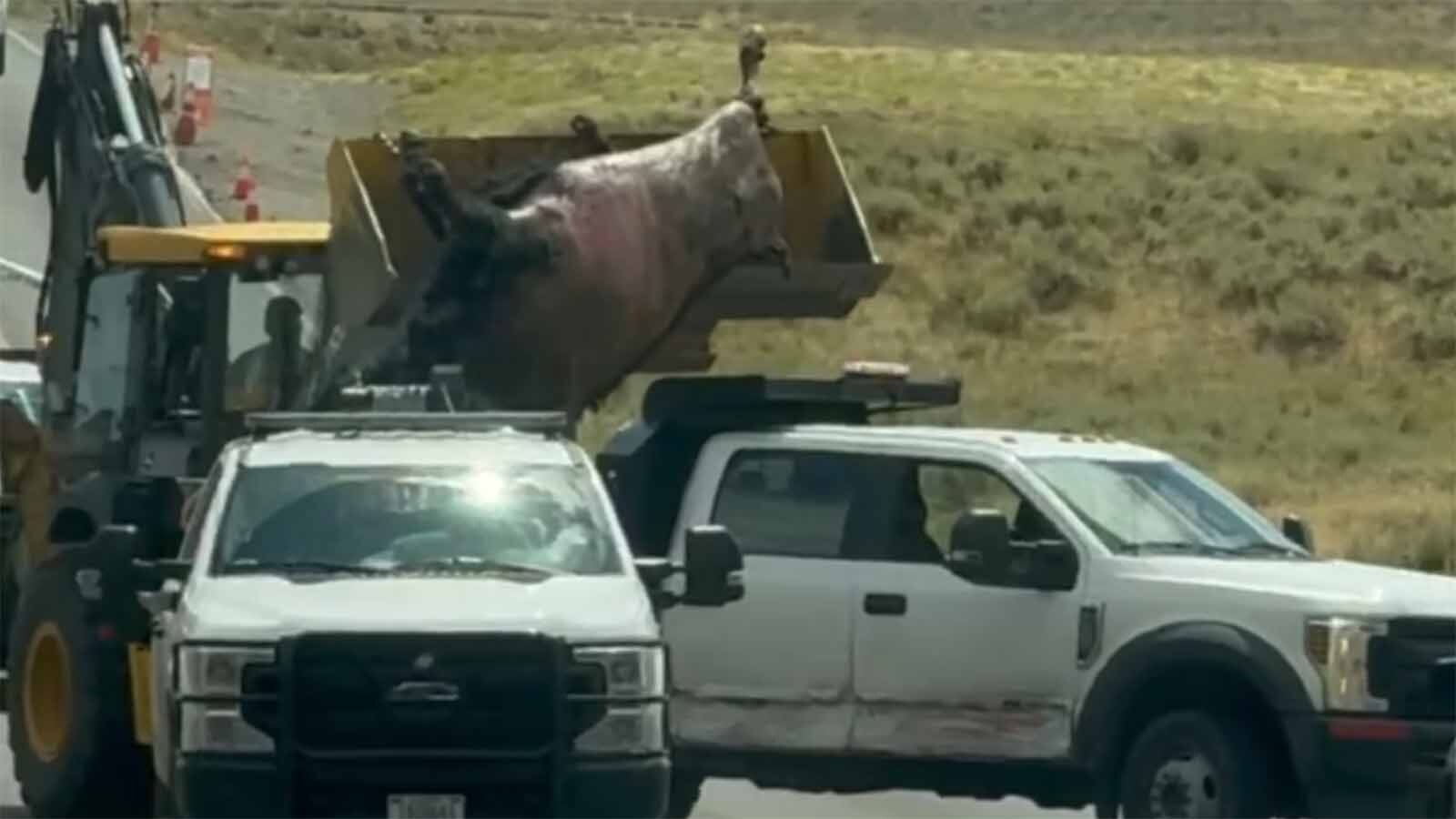With their adorable faces, cute chattering and human-like hands, raccoons might seem like they’d make great pets.
But though many have tried, most have failed to domesticate the clever trash pandas, said a Wyoming veterinarian whose had many raccoons pass through his clinic.
Roughly half of the raccoons taken into captivity have the wrong temperament for living with humans. At about five to six months of age, their attitudes can shift dramatically, Glen Gamble told Cowboy State Daily.
“It’s like a light switch. One day they’re fine. And then the next? Oh boy, you don’t know what you’ve got. You open your cage and you’ve got Regan from “The Exorcist” right in front of you,” said Gamble, who runs G Bar G Veterinary Services in Riverton with his wife, Gunda.
He was referencing the demon-possessed movie character played by actress Linda Blair in the iconic 1970s horror film.
Rico Seems Happy, Friendly
Rico the racoon, once a patient at G Bar G, is a tank of a critter at nearly 60 pounds that lives in the home of Jim Taylor near Lander.
Taylor told Cowboy State Daily that he’s had Rico for about four and half years.
Taylor’s friends found Rico when he was just a few weeks old and nearly dead from malnutrition and dehydration. Taylor nursed him back to health.
He used to let the raccoon come and go as he pleased. But once, after being gone for a couple of days, Rico came back home at about 3 a.m. “really messed up.”
Rico had tangled with something – either a coyote or a dog – and had suffered terrible wounds. Taylor took him to G Bar G, and Rico ended up losing his tail and a couple of his front claws.
Without those front claws, Rico can’t climb trees, and out in the countryside, “a racoon stuck on the ground is a dead raccoon,” Taylor said.
So he built an enclosure in his yard for Rico as well as a raccoon “den” is a spare room, and Rico has been home-bound ever since.
Rico is “extremely people-friendly” and has even become good pals with one of the family dogs, Taylor said.
The bandit also sleeps in Taylor’s bed at night and weighs a whopping 56 pounds. That’s about twice a normal raccoon’s weight, but Rico has always had a big, stout body, Taylor said.
Luck Of The Draw
Gamble said that he’s treated many raccoons, skunks, coyotes, foxes and other such wild critters that people have tried to keep over the years, so he doesn’t recall Rico specifically.
He said Rico must be one of those raccoons that didn’t go into demon-possessed mode during a visit. The animals, he said, can become hard to control at five to six months of age.
Why that age range is such a pivotal time for racoon temperament, he’s not sure.
“I think in the wild, that might be the age at which their mothers wean them, so that’s when they have to establish their independence,” he said.
Which way a young raccoon’s temperament will go seems to be complete luck of the draw, Gamble said. And even those who end up with a gentler temperament will probably never become pets in the true sense.
They might bond with a specific person, and be aloof, or even hostile toward others, Gamble said.
He said that his family tried keeping a couple of raccoons when his children were young. It mostly didn’t work out.
“With me, they would be psychotic, literally psychotic,” Gamble said. “Chattering and ready to fight. And then my daughter would show up, and they’d calm down.”
And while Rico might get along with Taylor’s dogs, Gamble said trying to keep dogs and raccoons in the same household frequently ends in disaster.
“Dogs can dish it out, but guess what, so can a raccoon. So now you’ve got two injured animals,” he said.
Always Into Something
As great as Rico has been to have around, Taylor said he wouldn’t recommend that just anyone try to keep a raccoon. The critters are endlessly curious, always into something. Rico has even been destructive on occasion.
Gamble said raccoons “can’t stay still.” And with their opposable thumbs and keen intelligence, they’re likely to cause trouble.
“They will manipulate things, test things. They’re smart. They’re like a bear. You know, bears are smarter than dogs. So, raccoons, like bears, are constantly testing things and trying to figure them out,” he said.
He added that with their voracious appetites, raccoons can quickly balloon in size if they don’t get plenty of exercise.
“These are roaming animals. A six-foot-by-six-foot enclosure isn’t going to work for them. They need something more like a 35-foot-by-35-foot enclosure. They need stuff that they can climb on,” Gamble said.
Try A Skunk Instead
Gamble said he’s seen many attempts to turn other animals into pets over the years, and most have failed.
As with most raccoons, people who try to have a household fox or coyote end up with “a captive, not a pet,” he said.
Surprisingly, skunks can make excellent pets, he said.
“They can tame right down,” Gamble said.
Of course, folks will want to get their skunks “de-scented” he said.
Gamble said it’s a simple procedure, best done when baby skunks are between 12 to16 weeks old.
Once that’s done, skunks can make great, cuddly pets “that like to lay in your lap and be petted,” Gamble said.
Mark Heinz can be reached at mark@cowboystatedaily.com.







